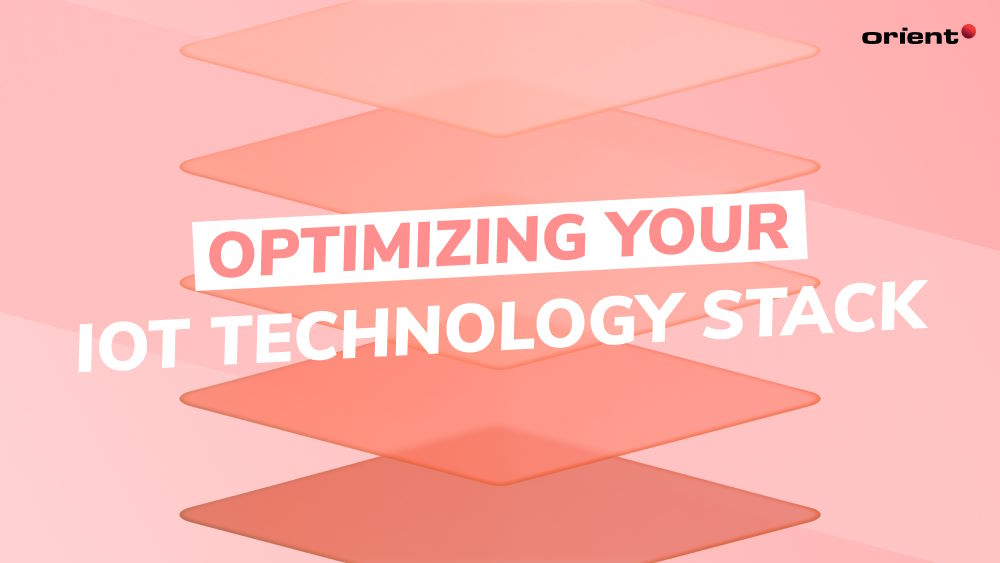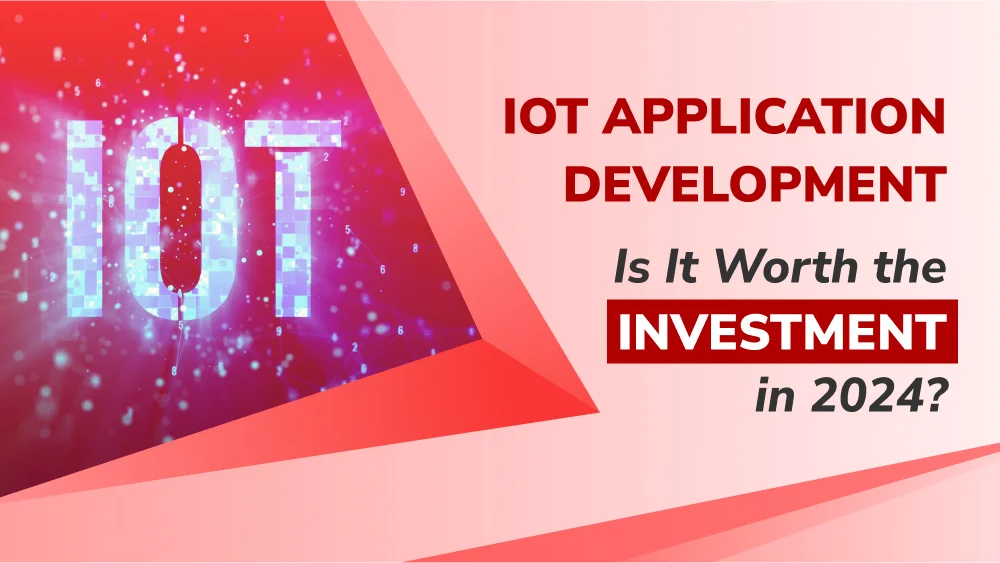The Essential Guide to Optimizing Your IoT Technology Stack

Content Map
More chaptersWhat elements make a successful software company? There is no definitive answer to this question. Some believe the right leadership team, realistic objectives, effective project management team, or even a mix of all of the above is what makes a prosperous software business.
In this article, however, we want to talk about the tools that shape engineering and company culture - the technology stack. The IoT technology stack, to be specific.
The Internet of Things has almost been used as a buzzword - that it is one of the technologies that will shape the future and transform the way we operate. There are definitely some bases for this claim, but many project managers and business owners still struggle to understand the technology itself.
This article will break down what an IoT tech stack is and how to choose one that builds and maintains your products well.
What Is an IoT Technology Stack?
Let’s start with the basic definition of what a technology stack is. A technology stack is simply a collection of technologies that are combined to construct an application. Commonly referred to as a technology infrastructure stack or solutions stack, a technology stack has become a critical component for constructing user-friendly, maintainable, and scalable web applications.
An IoT technology stack is a collection of tools, protocols, and software that enable the connection of IoT devices to the Internet and the data collection from them for a variety of uses.
What Does an Internet of Technology Stack Do?
The IoT stack is made up of hardware and software devices as well as various protocols for communication. The devices communicate through wireless communication networks, like WiFi and Bluetooth, as well as other protocols like BLE and Ethernet. IoT devices use these networks to process data that they get when they connect to IoT gateways or other edge devices. Devices then transmit data to the cloud to be analyzed. These data analytics can also be conducted locally.
Often, the communication between devices doesn’t involve human intervention. The conversations happen over IoT protocols, which make sure that data sent from endpoint devices (like sensors) is picked up and interpreted by other actions in the connected world. It doesn’t matter whether those actions are sent to an endpoint device, gate, or app.
Simply said, a number of mechanisms are in place to guarantee effective and efficient communication across the various layers of the IoT technology stack.
IoT-5-Layer Technology Stack Model

The IoT tech stack is often expressed in a multi-layer model. They vary anywhere from a three-layer model, a four-layer model to a five or seven-layer model. This article will use the five-layer IoT tech stack model.
Layer 1: IoT Devices, Sensors and Actuators
The first layer of IoT tech is literally the “things” in the Internet of Things - the device hardware. The device acts as a bridge between the
physical and digital worlds. Devices are the foundation of IoT technology.
Connected IoT devices, or the ones that your software will turn into smart connected IoT hardware devices, are going to support a number of functions that rely on the installed operating system.
The main goal of the first device software layer is to collect data. IoT technologies collect data from physical items and transmit it to the Internet for storage, processing, and analysis.
Therefore, you need to think of what kind of data and how much data you would like to gather. Then, work backward from there to determine what kind of device you need.
Transducers
Transducers are machinery that converts one form of energy into a different form. This is the case for the internal sensors of Internet of Things (IoT) devices and their actuators that transmit information as the devices interact with their environment.
Sensors and Actuators
Sensors and actuators are both a type of transducers. Sensors use electrical impulses to communicate after detecting changes in their surroundings. Sensors detect environmental changes such as variations in temperature, chemicals, and physical position.
Actuators, also a type of transducer, carry out physical operations in response to commands from their control centers, typically in response to modifications detected by sensors. Both sensors and actuators in IoT solutions play a vital role, as they are the building blocks of the Internet of Things (IoT), connecting the physical and digital realms.
- Embedded systems have both hardware and software elements, and they control single tasks in a larger system. Embedded software systems are microprocessor-based or microcontroller-based. One of the standards for embedded devices was established with the release of the Raspberry Pi platform in 2012. Using Internet of Things (IoT) technology with Raspberry Pi, you can easily and cost-effectively connect to other devices from anywhere in the world.
- Microcontroller Unit (MCU): Microcontrollers are small computers that have CPUs, RAM, and ROM built-in to microchips. However, microcontrollers have less processing power compared to microprocessors, even though they contain the necessary components to perform basic tasks.
- Non-computing Devices: Just as the name suggests, this type of IoT device’s only function is to connect and transfer data. It is incapable of computing.
Layer 2: IoT Gateway
What is an IoT gateway? Gateways are part of the technology of IoT that can be used to connect IoT devices to the cloud. Though not all IoT devices require a gateway, they can be used to establish device-to-device communication or connect devices that are not IP based and can’t connect to the cloud directly.
In short, it acts as the meeting place for a collection of sensors and actuators to manage their interconnection with an external network or system. Any smart device around you right now is an IoT gateway. Any given IoT project often has multiple gateways to support a large number of devices.
The IoT data collected is transferred through a gateway, preprocessed at the edge, and then delivered to the cloud.
Layer 3: IoT Networks and Protocols
In this layer, you and your team start to decide how the data is communicated through the device software and hardware. Rather than being a purely technological decision, this is more of a business and strategic decision. The decision will shape how the data enter and exit the cloud and how smart devices in the same building communicate with one another. The final decision determines the complexity of the IoT project, cost, deployment, etc.
IoT Protocols dictate how the data is sent so that information received from a device or sensor is processed and understood by another device, gateway, or service. There is no one-size-fits-all IoT protocol, as it depends on the specifics of one’s intended IoT deployments.
An Internet of Things (IoT) network is a group of hardware, including sensors, gadgets, appliances, and software, that interact with one another and share data and information without the need for human intervention.
There are five common types of IoT Networks that fit almost every business need:
- Cellular
- WiFi
- Local and Personal Area Networks (LAN/PAN)
- Low Power Wide Area Networks (LPWAN)
- Mesh Networks
Layer 4: IoT Platforms
An IoT platform, which is like the backbone of an IoT solution, mostly runs on a cloud or an internal company data center. These platforms should be able to handle the connectivity of lots of devices and make it easy to exchange or use data.
The majority of IoT platforms come with the following:
- A cloud gateway for IoT
- APIs, device management, and authentication
- Cloud infrastructure
- Integrations with third-party apps
IoT platforms are pre-configured working environments that you may change and expand as necessary. If you would want a deeper dive into IoT Platforms, check out our guide on this subject.
Layer 5: Cloud Applications
The last layer of the IoT Technology stack is the cloud applications.
Customers interact with the end-user applications. Depending on their needs, separate apps for the web, wearables, or mobiles need to be developed in addition to the web-based application.
When designing end-user applications, businesses need to have a clear understanding of who the target users are and what the goal of the application is. Often there are multiple users, especially in the Industrial Internet of Things.
Applications can also be categorized as internal versus customer-facing. In general, customer-facing applications receive more attention, but internal applications are equally significant in the context of IoT.
Some of these internal apps involve tools for remote device configuration and troubleshooting, performance reporting, fleet monitoring, and preventive maintenance.
This is where the role of a product manager becomes prominent - they need to have a clear vision of what is needed to make sure every requirement is met.
Choose Your IoT Technology Stack Today

As the IoT stack consists of multiple layers, what factors need to be considered when building one that is right for your business? It is suggested that you invest a sufficient amount of time in the process of working out an IoT stack that is right for you, as it will determine the kinds of products you will be developing, the kind of developers you need to hire, and so on.
Bear in mind that there are always trade-offs. If you prefer flexibility, for example, your chosen IoT solution might need more attention to maintenance. Try to ask yourself the following questions first when considering an IoT technology stack for your business:
- What are the requirements for your IoT project?
- Do the requirements fit in the budget?
- Is the IoT stack scalable without a negative impact on performance?
- How will you communicate with the sensors?
- Have you drafted a security guideline? IoT security has always been one of the top concerns of any IoT project, so make sure to work on resolving potential security problems.
Given that by 2023 every individual on earth will have access to more than three internet-connected gadgets, the Internet of Things is certainly among the technologies of the future.
If you haven’t started your IoT technology stack, now is the time. Have professionals lead the way and assist you in selecting the best team of developers to kickstart projects that will revolutionize the way your company operates.
The Orient Software team is a good place to start; let the team help you in finding the qualified developers you need to get your projects through to success. Contact us now.







